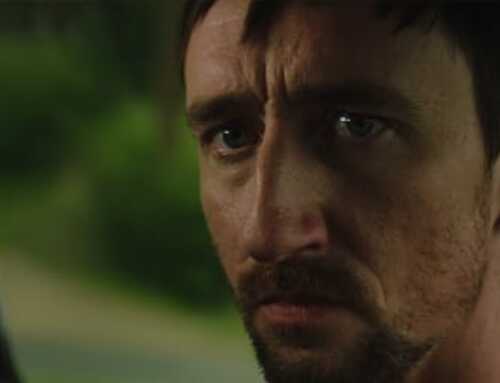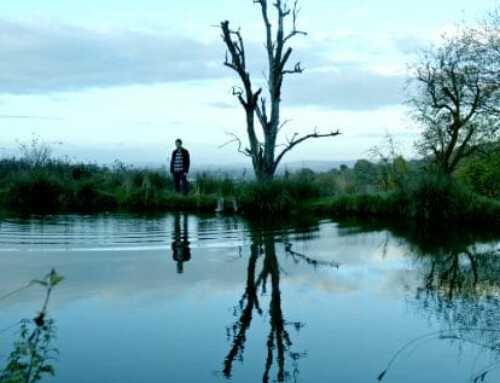CRIMES OF THE FUTURE marks David Cronenberg’s return to form as a master of body horror with a tale of evolution, otherness, and acceptance on personal and societal levels. The story takes place in a future where mankind is on the verge of evolution. While most have lost the sensation of pain, others have begun developing mutations that defy understanding. Some begin slicing up their bodies as a means of arousal, while others fearfully hide their changes. Meanwhile, the government forms the National Organ Registry to keep tabs on the precarious situation in hopes of controlling it. Not as shocking as some of Cronenberg’s other works, CRIMES OF THE FUTURE carries the filmmaker’s signature elements with a less nihilistic take on man’s synthesis with an artificial future.
Saul Tenser (Viggo Mortensen) is a performance artist whose body still keeps him in crippling pain while easing into this next stage of mankind’s existence. Saul’s body sporadically produces new and seemingly useless organs that he and his co-performer Caprice (Léa Seydoux) use as the centerpieces for their shows. Cradled in a mechanical sarcophagus, Caprice operates a surgical extraction of mystery organs from Saul’s evolving flesh to sold-out crowds. “Surgery is the new sex” one character discretely muses to Saul and it seems to be true. Voluntarily, Saul and Caprice reach out to the National Organ Registry in order to catalog their extractions and offer validity to the fledgling agency. Agent Wippet (Don McKellar) and Agent Timlin (Kristen Stewart) welcome the performers into their barren headquarters and it is apparent that Timlin has a crisp, meticulous interest in what Saul may develop next.
Did I mention the film opens with the murder of a child? Yeah. So this kid has developed an entirely new digestive system that isn’t particularly awful, but merely different. With Saul’s notoriety, and his connections with various agencies, the child’s father hopes to use his son’s death as a way to grow awareness. With everything else going on, the father of the deceased child reaches out to Saul in hopes of staging a performance that might shed light on a burgeoning minority in the evolutionary narrative.
This is quintessential Cronenberg, yet this time with a slightly softer outlook and clinical gore. I will be clear, there is some gnarly stuff in CRIMES OF THE FUTURE, but none of it is unwarranted. Cronenberg is exploring the connection between societal and biological evolution and the various ways we react to it. On the governmental level, there is documentation. On the artistic level, there is exploration. On the familial level, there is either acceptance or expulsion. Mortensen delivers a typically great performance as the brooding artist Saul who is saddled with the artistic interpretation of precarious times. Really everyone is great here. Yet the only one that matches Mortensen‘s nuance is Stewart as the prickly and aggressive Timlin.
No, there are no heads exploding via telekineses, or human flies vomiting on hands. Instead, we have an auteur diving into the concept of what it is for the marginalized to be recognized and accepted, and exploited in the process. Do not go in expecting to be shocked. Go in expecting to be provoked.
7 Out of 10
| Crimes of the Future | ||
| RATING: | R |
CRIMES OF THE FUTURE - Official Teaser |
| Runtime: | 1 hr 47 Mins. | |
| Directed By: | ||
| Written By: | ||







